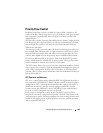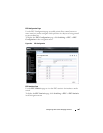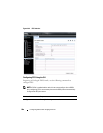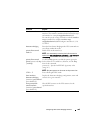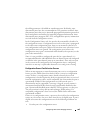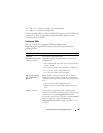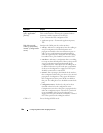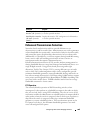
992 Configuring Data Center Bridging Features
DCB Capability Exchange
The Data Center Bridging Exchange Protocol (DCBx) is used by DCB
devices to exchange configuration information with directly connected peers.
DCBx uses type-length-value (TLV) information elements over LLDP to
exchange information, so LLDP must be enabled on the port to enable the
information exchange. By default, LLDP is enabled on all ports. For more
information, see "Discovering Network Devices" on page 761.
The main objective of DCBx is to perform the following operations:
•
Discovery of DCB capability in a peer
: DCBx is used to learn about the
capabilities of the peer device. It is a means to determine if the peer device
supports a particular feature such as PFC.
•
DCB feature misconfiguration detection
: DCBx can be used to detect
misconfiguration of a feature between the peers on a link.
Misconfiguration detection is feature-specific because some features may
allow asymmetric configuration.
•
Peer configuration of DCB features
: DCBx can be used by a device to
perform configuration of DCB features in its peer device if the peer device
is willing to accept configuration.
For discussion and examples of configuring iSCSI with DCBX, refer to
"Configuring iSCSI Optimization" on page 459.
The DCBx protocol supports the propagation of configuration information
for the following features:
• Enhanced Transmission Selection (ETS)
• Priority-based Flow Control (PFC)
• Application Priorities
These features use DCBx to send and receive device configuration and
capability information to the peer DCBx device.
The Application Priorities information is simply captured from the peer and
potentially propagated to other peers by the DCBx component, as well as
being configured when iSCSI is enabled on an operationally active PFC port.
DCBX information is carried over LLDP, which is a link-local protocol. When
configuring links in a port-channel to use DCBX, the DCBX settings should
be the same for all links in the port-channel.




